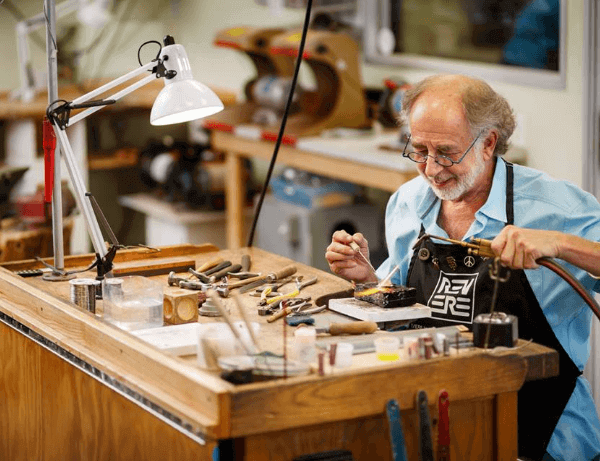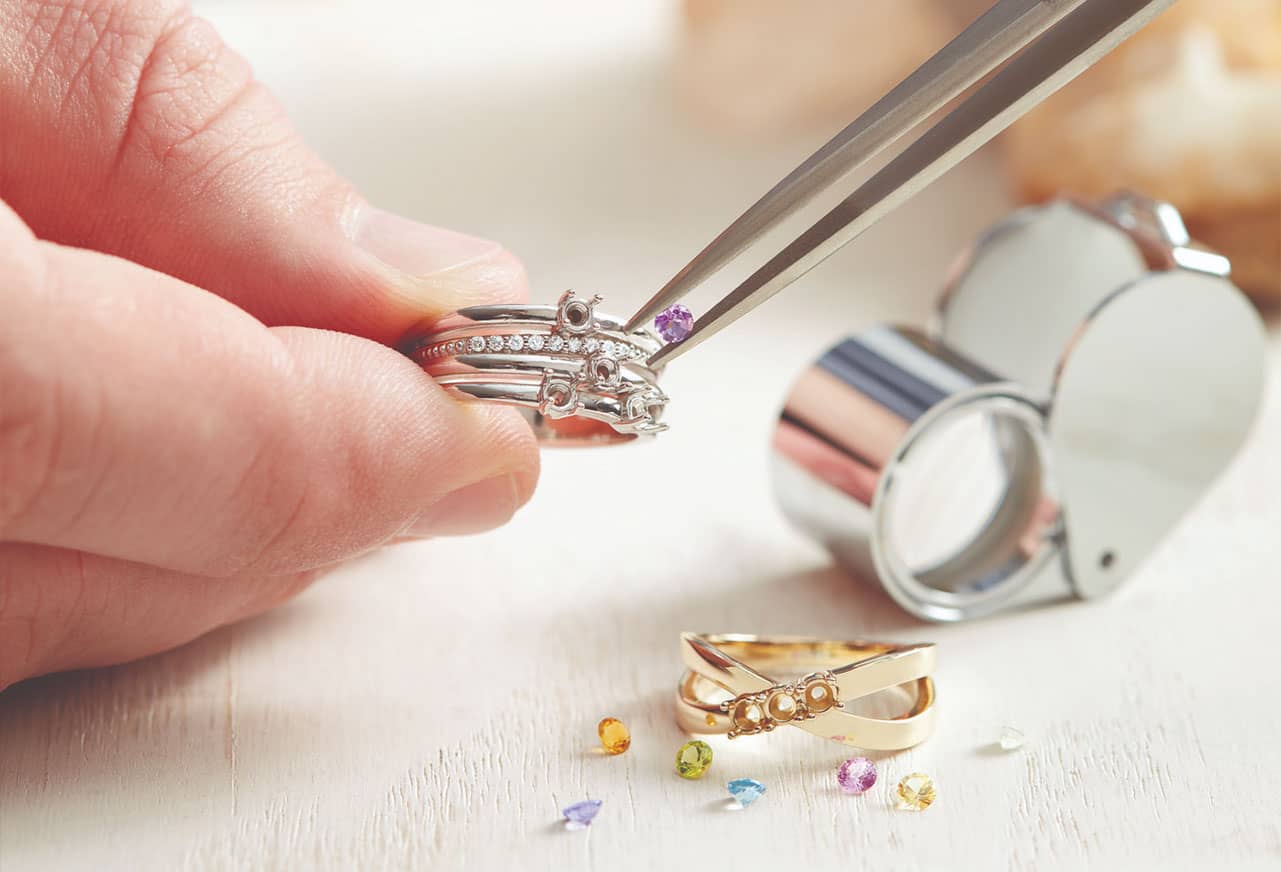Jewelry repairs and restorations can seem like a daunting task. Are you looking to learn the art of jewelry repair and restoration? This article will provide you with all the information you need to know about jewelry repairs and restorations. We will discuss the tools and techniques used, the best practices for restoring vintage pieces, and the cost of jewelry repairs. Read on to learn more about the art of jewelry repairs and restorations.
1. Types of Jewelry Repairs
Jewelry repairs and restorations are an art form. It requires skill, precision, and patience to return a piece to its original condition. There are different types of jewelry repairs that a jeweler can perform.
- Resizing: Rings can be resized to fit a finger better. This is done by adding or removing metal from the ring.
- Stone Replacement: Stones can be replaced if they are lost or damaged. This can be done by resetting the original stone or adding a new one.
- Cleaning and Polishing: Jewelry can become dull or tarnished over time. It can be cleaned and polished to restore its original shine.
- Engraving: Engraving is a type of jewelry repair that can add a personal touch to a piece. It can be done on most types of jewelry.
- Chain Repair: Chains can be repaired if they are broken or damaged. This is usually done by soldering the broken link back together.
It is important to find a qualified and experienced jeweler for jewelry repairs and restorations. They will be able to assess the piece and determine the best course of action for repairs.

2. Necessary Tools for Jewelry Repairs
Jewelry repairs and restorations require a specific set of tools in order to ensure a successful outcome. The following is a list of the necessary tools for jewelry repairs.
- Jeweler’s Loupe: This tool is necessary for jewelers to examine jewelry pieces in detail. A loupe is a magnifying glass with a scale, and is used to identify any damage or defects in the jewelry.
- Soldering Tools: Soldering tools are used to join metal pieces together, and are often used for repairing broken jewelry.
- Files and Grinders: Files and grinders are used to shape and refine jewelry pieces. They are used to remove excess metal or to polish the jewelry.
- Polishing Cloths: Polishing cloths are used to polish jewelry pieces and to remove tarnish and dirt. It is important to use a soft cloth when polishing jewelry to avoid scratching the metal.
- Tweezers: Tweezers are used to pick up and place small pieces of jewelry, such as beads and stones.
- Pliers: Pliers are used to bend and shape jewelry pieces. They are also used to open and close jump rings and to hold pieces in place while soldering.
In addition to the above tools, there are other tools and supplies that can be used for jewelry repairs and restorations. These include cleaning solutions, drills, and hand tools. It is important to use the correct tools for the job

3. Step-by-Step Guide to Jewelry Repairs
Repairing jewelry is a valuable skill that can save you money and allow you to keep your favorite pieces in top condition. Here is a step-by-step guide to help you repair your jewelry:
- Assess the damage: Look closely at the jewelry and determine what needs to be fixed. Make a list of the necessary repairs and prioritize them.
- Gather materials: Purchase or gather the necessary tools and materials for the repairs. This may include pliers, wire cutters, solder, and a jeweler’s loupe.
- Make the repairs: Follow the list you created in step one and carefully make each repair. Take your time and pay attention to detail.
- Clean and polish: Once the repairs are complete, clean and polish the jewelry to restore its shine and remove any residue from the repair process.
- Store properly: Store the jewelry in a safe place to prevent further damage. Consider investing in a jewelry box or case to protect your pieces.
Remember, if you are unsure about any aspect of the repair process, it is always best to consult a professional jeweler. They can provide guidance and ensure that your jewelry is repaired correctly.
For more information about jewelry repairs, check out this helpful guide from Jewelers of America.
4. Techniques for Jewelry Restoration
There are several techniques used in jewelry restoration, depending on the type and extent of damage. Here are some common techniques:
- Cleaning: The first step in restoration is cleaning the jewelry to remove dirt, grime, and tarnish. This can be done using a soft cloth, soap and water, or special jewelry cleaning solutions.
- Polishing: Polishing is done to remove scratches and restore the shine of the jewelry. It can be done by hand or using a polishing machine.
- Stone resetting: If a stone is loose or missing, it can be reset or replaced. A jeweler will carefully remove the stone, clean the setting, and place the stone back in its place.
- Replating: If the metal has worn away, replating can be done to restore its original appearance. This involves applying a thin layer of metal to the surface of the jewelry.
- Engraving: Engraving can be used to add or restore a design or message on the jewelry. A skilled jeweler can engrave by hand or using a machine.
It’s important to note that some jewelry may not be suitable for restoration, especially if it has significant damage or is made of fragile materials. Always consult with a professional jeweler before attempting any restoration work.
We recommend checking out the Gemological Institute of America for more information on jewelry restoration techniques.

5. Common Issues with Jewelry Repairs
Jewelry repairs and restorations can be complex tasks. There are many common issues that can arise when attempting to repair or restore a piece of jewelry. The following are five of the most common issues that must be addressed when performing jewelry repairs and restorations.
- Matching metals: One of the most difficult tasks when performing jewelry repairs or restorations is finding the right metal to replace the existing metal or to fill in the missing pieces. The metals must match in color, texture, and weight.
- Stone replacement: Replacing a missing or damaged stone can be a difficult task. It is important to find a stone that is the same size and shape as the original. It is also important to find a stone that is of the same quality and that has the same color and clarity.
- Resizing: Resizing a piece of jewelry can be a tricky task. It is important to make sure that the jewelry is not stretched or distorted when resizing it. It is also important to make sure that the metal is not weakened or compromised in any way.
- Polishing and cleaning: Polishing and cleaning a piece of jewelry can be a difficult task. It is important to use the right products and techniques to ensure that the jewelry is not damaged in any way. It is also important to make sure that the jewelry is not scratched or discolored during the process.
- Soldering: Soldering is one of the most difficult tasks when performing jewelry repairs and restorations.
6. Professional Jewelry Repair Services
Jewelry repairs and restorations require a certain level of skill and craftsmanship. Professional jewelry repair services offer experienced and knowledgeable personnel to ensure that your jewelry is restored to its original condition. Many repair services have the ability to repair a wide range of jewelry including watches, rings, necklaces, bracelets, earrings, and more.
When choosing a professional jewelry repair service, it is important to ensure that they are qualified and experienced in the type of repair that you require. Many services have a portfolio of past repairs and restorations that they have completed, so it is worth researching this before committing to a particular service. It is also a good idea to ask for references and testimonials to ensure that they are reputable and reliable.
When considering a professional jewelry repair service, it is important to take into account the cost, as this can vary depending on the type of repair and the complexity of the job. It is also important to ask about any guarantees offered, as this can ensure that you are happy with the results. Many services also offer cleaning and polishing services to ensure that your jewelry is kept in pristine condition.
When selecting a professional jewelry repair service, it is important to ensure that they offer the best quality of service and use the best materials and methods to ensure that your jewelry is restored to its original condition. It is also worth asking about any additional services that they may offer, such as engraving or customization.
